Hair is a person’s crowning glory. The hair’s cut, style, color, and length are a reflection of the personality and its texture, shine, and strength depict an individual’s state of health. The hair quality, quantity, and appearance change with age and health condition. Not every person has the same type of hair. There are various types of hair those are determined by various factors like thickness, color, strength, volume, etc. In this article we will take a look at thin hair care.
As said, hair can be differentiated based on color, length, and volume. Let’s look at the different types of hair –
- Thick Hair
- Thin Hair
- Fine hair
- Coarse Hair
What is Thin Hair?
Thin hair is the opposite of Thick Hair; i.e. thin hair is not related to the hair-strand. Thin hair is related to the density of hair on the scalp. If the number of hair follicles on the scalp is sparse or less; i.e. a lesser number of hairs with respect to the area under consideration, then it is called as Thin Hair.
Thin hair can be identified by these means –
- When you part the hair and the scalp is easily visible, then it is Thin Hair.
- When you bunch hair into a ponytail and the diameter of the ponytail is lesser than 2 centimeter, then it is Thin Hair.
- When you create a hair partition and scalp is easily shown, then it is Thin Hair.
What is Fine Hair?
Fine hair, the opposite of coarse hair, is unrelated to hair density. Fine Hair relates to the cross-section area of an individual hair strand. Dense/ Thick Hair can also be Fine Hair. Fine hair strands cannot be easily seen as they have a very small cross-section.
Fine hair can be identified by these means –
- When you compare a single strand of hair with a string of thread and the hair is thinner in comparison, then it is Fine Hair.
- When you rub a strand of hair between your forefinger and thumb, and if you cannot feel the hair strand rolling between your fingers, then it is Fine Hair.
Thin / Fine Hair Care Tips
Fine Hair or Thin Hair needs to be taken care of in specific ways to ensures that they show to their advantage every day. These two types of hair are often confused with each other.
Fine Hair is most often also oily or greasy; i.e. the scalp releases natural oils more often in the case of Fine Hair. Thin Hair can are sometimes genetically inherited but they are also be caused by prolonged illnesses, some medications, surgery, a thyroid condition, and advancing old age. Therefore, thin hair is one of the most common hair complaints.
Let’s look at a few tips to manage thin hair or fine hair and keep it looking beautiful and healthy
1. Scalp Care
Approximately 90% of hair care is based on scalp care. The hair follicles and scalp maintain their strength through hair care measures like hair massages that stimulate blood circulations in the scalp leading to increased hair root health, hair masks that on regular applications provide required nutrition directly to the scalp, and hair wash that increase scalp skin breathing.
Here is a detailed guide on how you can take care of your hair during monsoon.
2. Keep Hair Oil-Free
It is important to wash your hair regularly. This ensures that the excess oil secretion washes away and it also ensures that the dirt or grime sticking to the hair, that the hair was exposed to in your daily routine, is cleaned. The removal of excess oil, dirt, and grime promotes hair growth as well as hair health.
3. Regular Hair Trim/ Cut
A regular hair cut or trim is known to strengthen the hair because it removes split ends. A hair cut ensures that the hair continues to lengthen. Most experts state that a hair-trim every 6-8 weeks is good for hair health.
4. A Healthy Diet
Hair is a part of our body; moreover, hair health depends on the health of our skin cells. Therefore, proper hair care includes healthy eating habits. Protein-rich foods (like fish or legumes), mineral-rich diets (like coconut or olive), etc. are known to help in promoting hair growth, hair health, and scalp health.
5. Biotin
Research shows that biotin application promotes keratin production in the scalp resulting in thicker and denser hair. This keratin is stated to help in keeping hair shiny, lengthening of hair, and improve the thickness of hair. Some organic hair masks able biotin-rich and help in improving hair conditions.
6. Do Not Over-Wash Hair
It is common disbelief that frequently washing hair with shampoo results in healthier hair. The scalp releases necessary natural oils that provide nutrition and protect the hair roots. Frequent washings remove these natural oils and leave the scalp dry; resulting in hair breakages, dandruff, and hair loss.
Research shows that bi-weekly washing of hair with shampoo keeps the scalp clean and grease-free as well as preserves the natural oil balance of the scalp.
Organic Remedies for Thin Hair or Fine Hair
Any remedial measure for thin hair or fine hair is aimed towards improving the growth pattern, the external appearance of hair, and the regular maintenance of hair. Organic remedies rely on nature-based techniques that are easy to follow and do not disturb the natural hair balance system of the body.
Let’s look at a few organic remedies for thin hair or fine hair –
1. Rahua Oil Massage
Research suggests that Rahua oil has anti-oxidant, microcirculatory, and anti-bacterial properties ensure deep penetration of the oil into the hair structure and increased scalp health. A 15-minute pre-wash Rahua oil hair massage every week is said to improve hair health. Applying Rahua Oil to freshly washed damp hair, concentrating on the hair ends and the length, is stated to decrease hair thinning due to hair fall, hair breakage, and split ends.
2. Argan Oil Massage
Argan oil is said to rich in natural phenols, which is very beneficial for scalp health and hair follicles. These phenols are reported to increase keratin production in the scalp that results in fresh hair growth as well as hair maintenance.
A 15 minutes daily hair massage with Argan oil, before going to bed, is said to promote production. This ensures strengthening of hair roots as well as promoting new hair growth.
3. Bhringraj Oil Massage
Bhringraj is an Ayurvedic herb with anticancer, antibacterial, antiviral, analgesic, antihepatotoxic, hypotensive, and ovicidal properties.
A Bhringraj-infused oil massage for 15 minutes every week, at least 30 minutes before a hair wash, is said to prevent hair loss, increase hair growth, and prevent premature greying of hair.
4. Coconut Oil Massage
Coconut oil is stated to have lauric acid, capric acid, and caprylic acid. These acids are purported to give the oil a capability to be absorbed into the hair and hair roots instead of staying on the scalp after application. It is said to increase the circulation in the scalp to facilitating hair growth and oxygenation in the scalp area.
A 15-20 minutes hair massage before a hair wash once a week regularly is said to improve hair health. Moreover, the absorption of the coconut oil into hair strands leads to a voluminous look of the hair.
5. Aloe Vera Gel Application
The proteolytic enzymes in Aloe Vera gel are said to heal and repair dead cells. This promotes hair growth by stimulation of hair follicles, thereby, resulting in increased hair density. Oral consumption and topical scalp massage lead to improved hair health.
- Apply fresh Aloe Gel, taken by cutting open Aloe Vera plant, onto the scalp followed and massage for 5 minutes.
- Soak for 20-30 minutes.
- Rinse hair with tepid or warm water
Research stated that the application increases density, growth, and shine of hair.
6. Egg Masks
Eggs are rich in protein, biotin, iodine, selenium, pantothenic acid, and vitamin B12. A homemade hair mask with eggs is said to be great for shiny, healthy hair. Egg yolks, high in biotin, helps to add moisture to the hair and increases hair heath. Egg white, high in protein, increases luster and volume.
- Mix 1 egg, 1 tablespoon olive oil, 1 tablespoon honey (for extra moisture), 1 teaspoon lime juice (to cut greasiness), and 1 tablespoon yogurt (for strength and shine to hair) in a bowl.
- You can add 2-3 tablespoons of water to thin out the mixture. Use lime juice for oily hair.
- Apply the mask on damp hair from root to tip for 20-30 minutes.
- Rinse hair with tepid or cool water.
This can be followed by a hair wash with a shampoo for a thorough cleaning. To avoid the egg smell, vanilla extract can be added to the hair mask.
7. Henna Hair Mask
Henna, Ayurvedic plant, is a reddish-brown dye often used on hair or skin. Sundried Henna leaves are powdered, this powder can be mixed with water to make a henna hair mask. The henna mask coats the outer layer of hair and does not disturb the internal hair structure. The added layer or coating thickens the hair strand and gives it an appearance of greater volume.
- Mix 200 grams of henna powder with water to make a thick paste.
- Soak paste overnight.
- Apply the mask from root to tip evenly and cover with a shower cap.
- Rinse well with cool or tepid water after 2-3 hours.
Post henna application care can include an oil massage to eliminate any dryness of the scalp. Cloves powder, egg-white, neem leaf powder, or bhringraj extract, etc. can be added to the Henna mask for increased hair care.
8. Amla Juice Rinse
Amla juice is rich in Vitamin C, amino acids, and other nutrients. Moreover, it has antioxidant properties. These properties promote hair health, tops hair loss, stops greying, and increase the thickness of hair.
- Overnight soaked 1 tablespoon Amla powder in 1 glass of water.
- Rinse hair post shampoo with the strained Amla extract water.
- Leave the rinse in hair for 5-7 minutes.
- Wash with warm or tepid water.
9. Reetha-Shikakai-Amla Homemade Shampoo
The Ayurvedic properties of reetha, shikakai, and amla result in shiny, voluminous hair. The powders of all three herbs are easily available; however, using whole herbs is preferable for better and undiluted results.
- Use 2:2:1 ratio for reetha, shikakai, and amla roots/ piece/ pods respectively.
- Soak it in water overnight followed by boiling and cooling.
- The cooled mix must be pulped by hand then strained.
- The strained liquid is the homemade shampoo and it can be used on wet hair for cleaning and conditioning. Leave the shampoo for 5 minutes after application for better effects.
How to Style Thin Hair?
Thick hair and Coarse Hair look voluminous. However, fine hair and thin hair do not; therefore, they are difficult to style. Let’s take a look at a few styles recommended for thin/ fine hair –
- Bob Cut
- Bangs
- Layers
- Wavy Lob
- Deep Side Parting
- Ponytail
- Pixie Cut
Frequently Asked Questions About Thin Hair Care</h2
1. What are the reasons for thinning of hair?
Ans : Improper care, hormonal imbalance, hereditary baldness, thyroid, surgery, and alopecia are some of the common causes of thinning of hair. Most organic methods can easily counter any of these causes, except hereditary thinning or balding. However, research states that hereditary thinning of hair in women can be cured with supplements.
2. What is the diet for thin hair improvement?
Ans : The easiest and most effective way to improve hair quality and quantity is by improving and supplementing the diet. These are a few diet tips –
- Maca Root
- Coffee
- Spinach
- Yoghurt
- Fish
- Liver
- Eggs
- Legumes
- Mushrooms
- Poultry
- Nuts and Seeds
3. What is the difference between Fine Hair and Thin Hair?
Ans : In most cases, fine hair and thin hair are easily confused. So let’s make it easy to understand –
| Fine Hair | Thin Hair |
|---|---|
| Can be Dense | Cannot be Voluminous |
| Cannot be Thick in cross-sectional area | Can be thick in cross-sectional area |
| Can have a large number of hair follicles packed together in any area of the scalp | Has a lesser number of hair follicles packed together in any area of the scalp |
| Are usually genetically hereditary | Can be caused by age, illness, surgery or genetics |
4. How to add volume to thin hair?
Ans : Most of the organic remedies add volume to thin hair or fine hair. Apart from the above-stated remedies, you can also do the following –
- Use hair mousse
- Use hair gel
- Use shampoos with Tea Tree Extract, Maca Oil Extract, or Rahua Oil Extract
- Use a Gelatin-wash
- Massage Rogain into the scalp
- Consume Biotin, Folic Acid, Multi-vitamin, or Collagen supplements in the diet
- Use curling tongs to create a voluminous look/ style
- Use microfiber spray to create the illusion of thick hair
Conclusion
Thin Hair and Fine Hair are often confused with each other. A person can have both thin and fine hair. Fine Hair and Thin hair are difficult but not impossible to style with proper care, good dietary plan, and regular maintenance. Organic Remedies can easily boost growth and volume of hair. Therefore, start today to get better, shinier, and thicker hair.
If you liked this article then please share it with your friends on social media. Also leave your valuable feedback in the comments section below. Thanks!


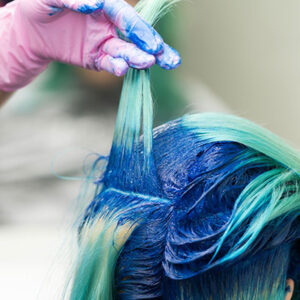

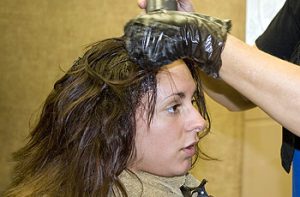

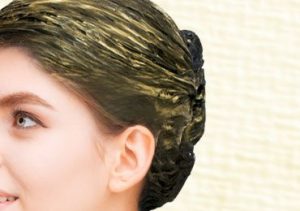

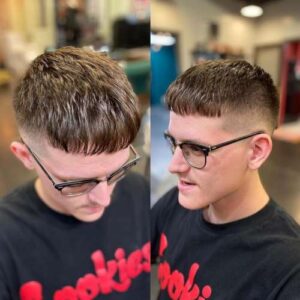



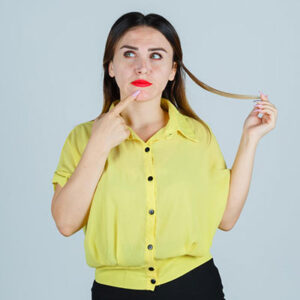
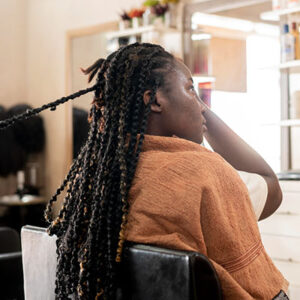

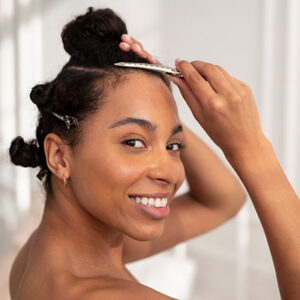



I agree on your tips,l love them and l went to learn more
I agree on most of the tips you have suggested. I also suggest that a good quality of hair comb and hair brush are also play a great role for great hair.